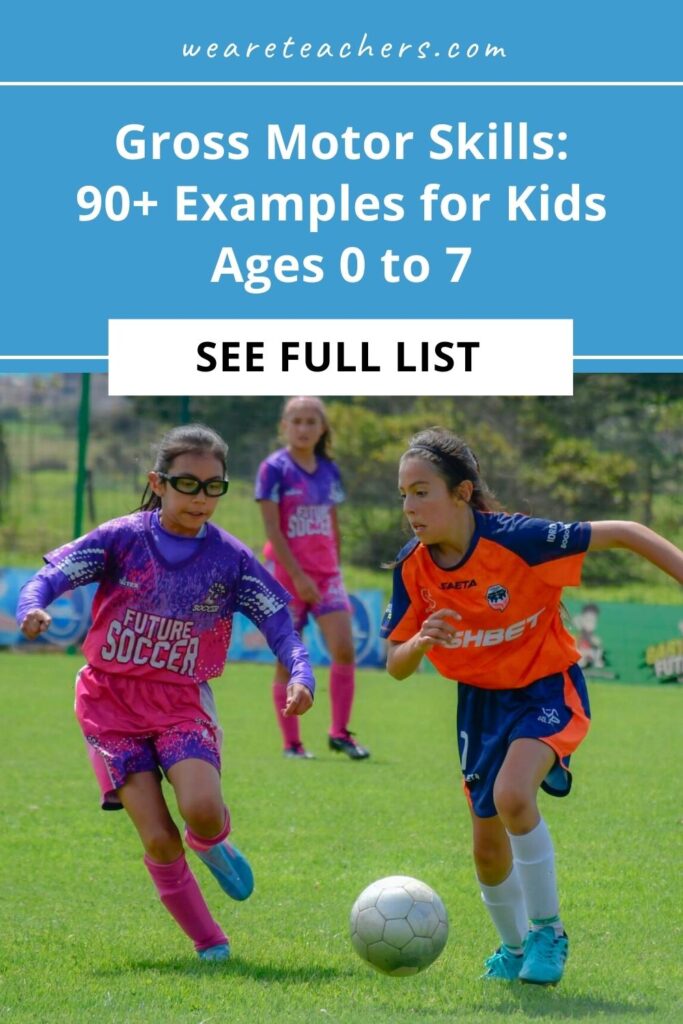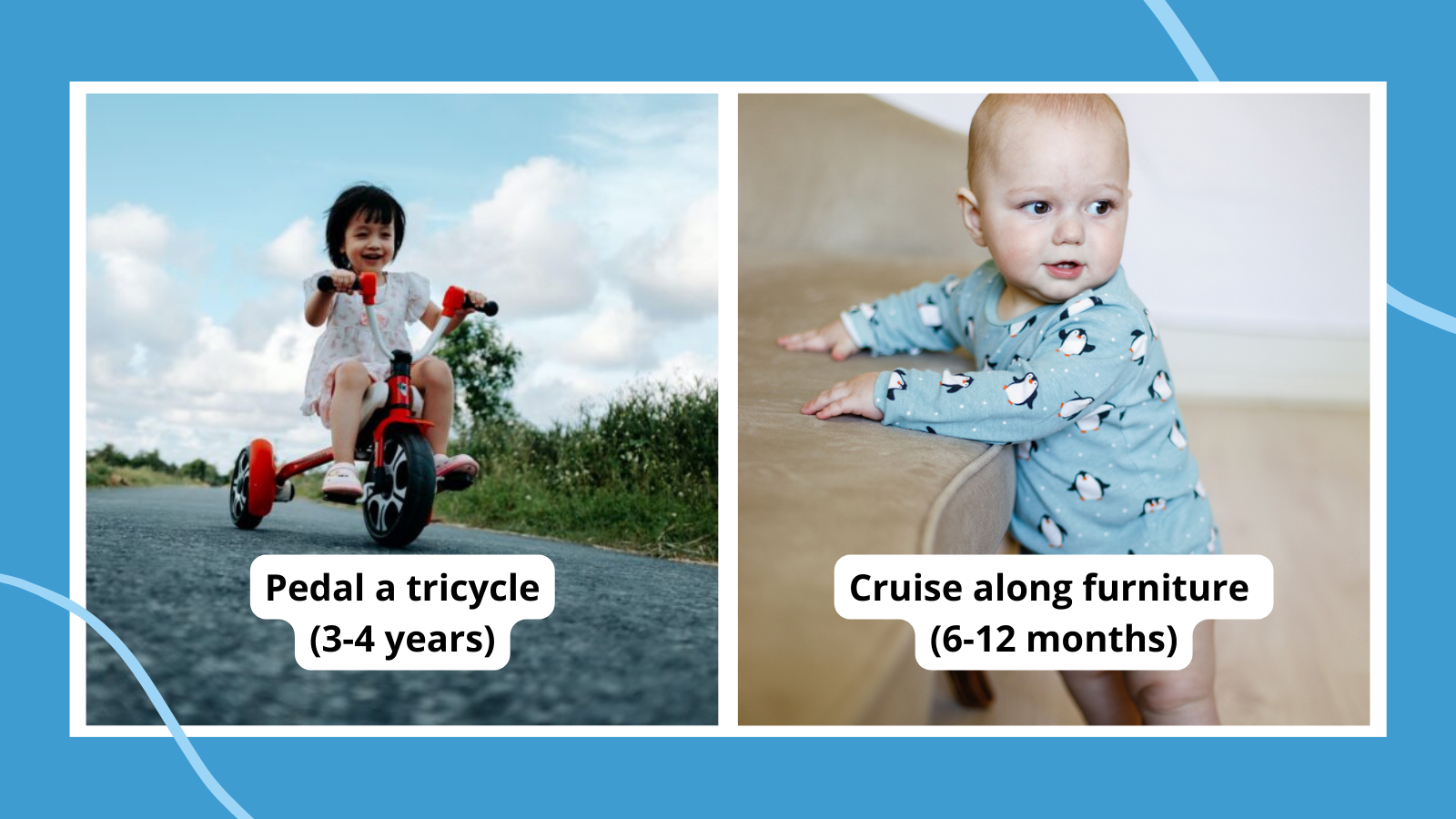Day in and day out, we see children developing their gross motor skills, which are skills that involve the large muscles. These skills are important for everyday life—walking, running, etc. They’re also important for developing fine motor skills, balance, strength, and body awareness. From their first roll to skipping down the street, kids make huge progress and growth in gross motor skills from birth through elementary school.
In general, gross motor skills start out rough and then get more refined as kids get practice. For example, a child will start to walk in wobbly steps, then with a wide gait, and finally smoothly and nimbly.
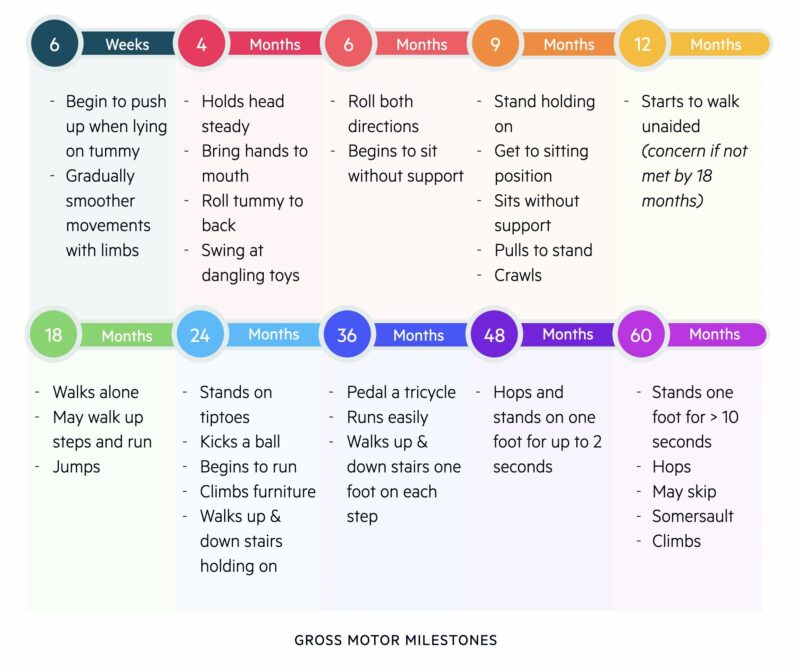
Image: Pulsenotes
Below are the gross motor skills that kids develop from birth through elementary school. (One caveat: All kids are different and may develop skills slightly before or after this sequence. If you have concerns about your child, talk to your pediatrician.)
Newborn Gross Motor Skills (0–3 months)
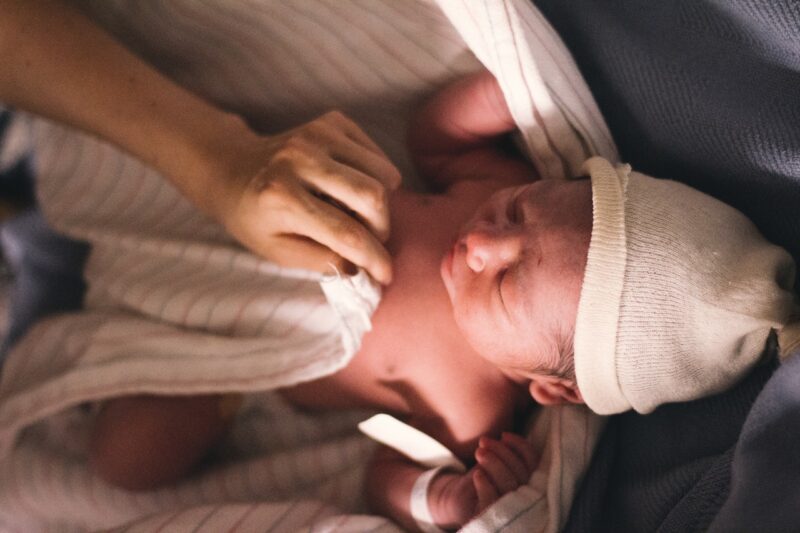
The first few months are all about first movements. Babies are figuring out just how they can move their heads, legs, and arms.
By 3 months a baby will:
- Turn their head from side to side
- Lift their head while on their tummy
- Kick their legs
Baby Gross Motor Skills (3–6 months)
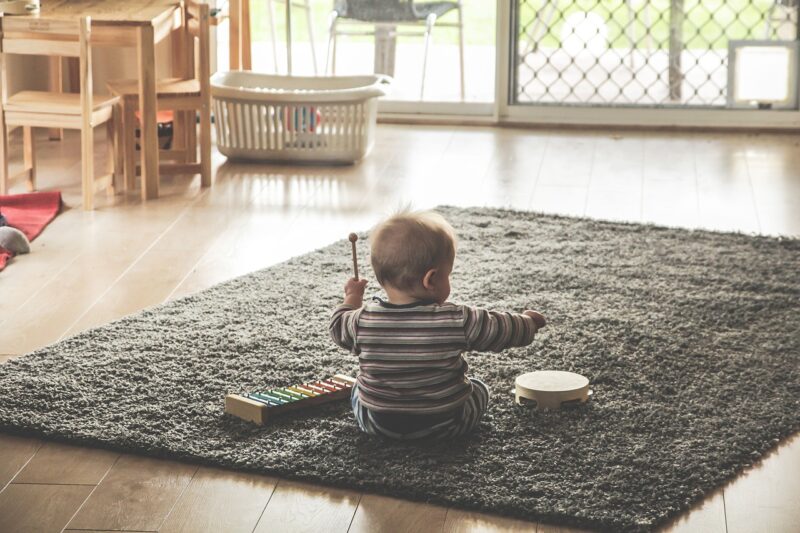
Now, baby’s head is more stable, and they are learning how to hold their body on their own.
By 6 months a baby will:
- Raise their head when pulled to sit
- Push up and turn their head while on their belly
- Roll from belly to back, and back to belly
- Bring their feet to their mouth while lying on their back
- Push up on their hands while on their belly
- Turn in a circle while on their belly
- Sit with support
Baby Gross Motor Skills (6–12 months)
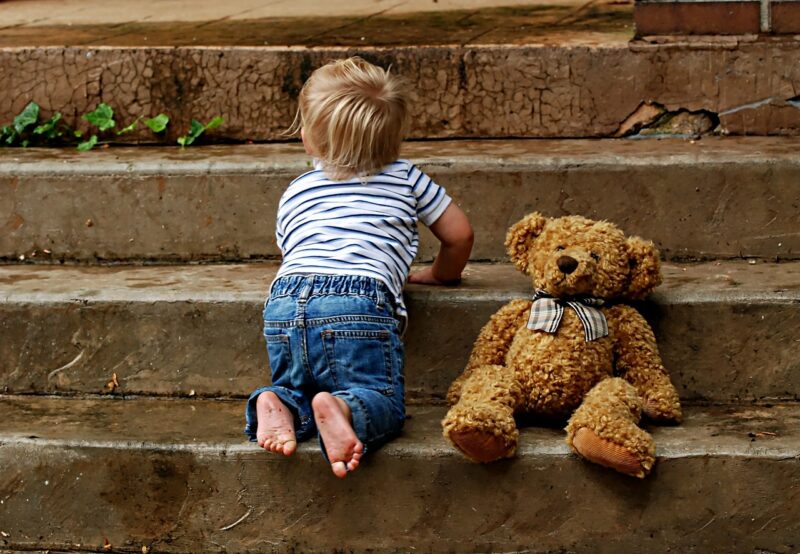
Once baby has mastered sitting, they’ll be reaching for toys and trying to move on their own by crawling and scooting.
By their first birthday, a child will:
- Sit alone
- Reach for toys
- Reach to catch themselves when they lose their balance
- Crawl on their belly
- Crawl on their hands and knees
- Pull to a standing position
- Push themselves onto all fours
- Cruise along furniture
- Walk while holding onto your hands
- Take a few steps without support
- Roll a ball to an adult
Toddler Gross Motor Skills (12–18 months)
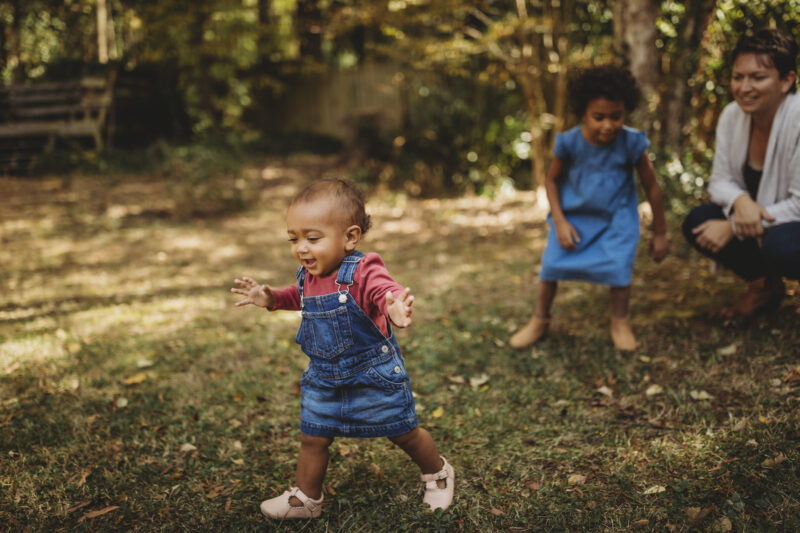
Image: Samantha Cleaver
Toddlers are all about motion, and kids will start to move independently and express themselves through movement, as they wave their hands to get your attention or clap when they’re proud of themselves.
Young toddlers will:
- Walk while holding onto one hand
- Move from one position to another
- Stand alone for a few seconds
- Crawl up stairs
- Stand up from the floor
- Clap their hands
- Build a tower with two blocks
- Wave goodbye
- Scoop objects with a small shovel or spoon
- Bang objects together using both hands
- Put small objects into a container
- Walk a few steps
- Squat and stand back up while holding onto support
Toddler Gross Motor Skills (18–24 months)
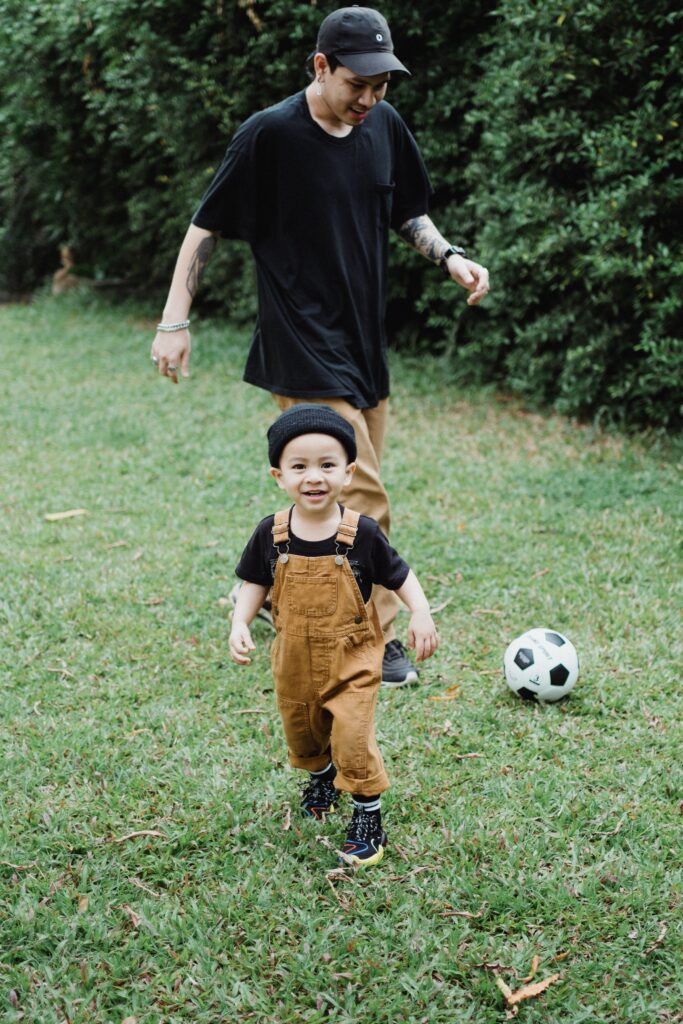
Toddlers are getting more mobile every day. By 2 years old, kids can walk, run, and play.
Toddlers will:
- Walk up stairs while holding onto rails
- Crawl down stairs
- Run a few steps, though they are clumsy
- Kick a ball forward
- Put rings on pegs
- Remove pegs from a pegboard
- Build a tower three or four blocks high
Toddler Gross Motor Skills (2–3 years)
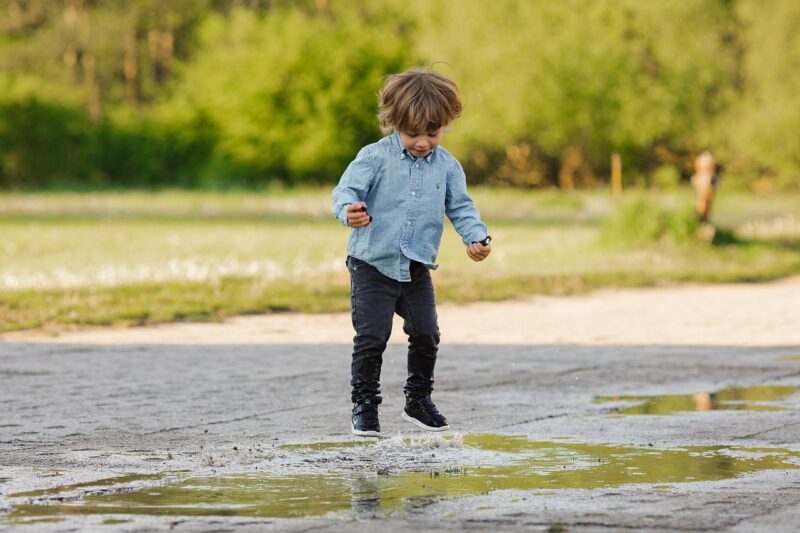
Older toddlers are on the move all the time—now they’ll need you to run to catch up with them, and they can really engage with games that involve kicking and rolling.
At 2 to 3 years old, toddlers can:
- Walk and run
- Change directions while walking or running
- Jump in place with both feet
- Walk up and down stairs
- Kick a ball with either foot
- Roll a ball
- Imitate standing on one foot
- Imitate moving arms together
- Walk on tiptoes
- Catch a ball using their body
Preschooler Gross Motor Skills (3–4 years)
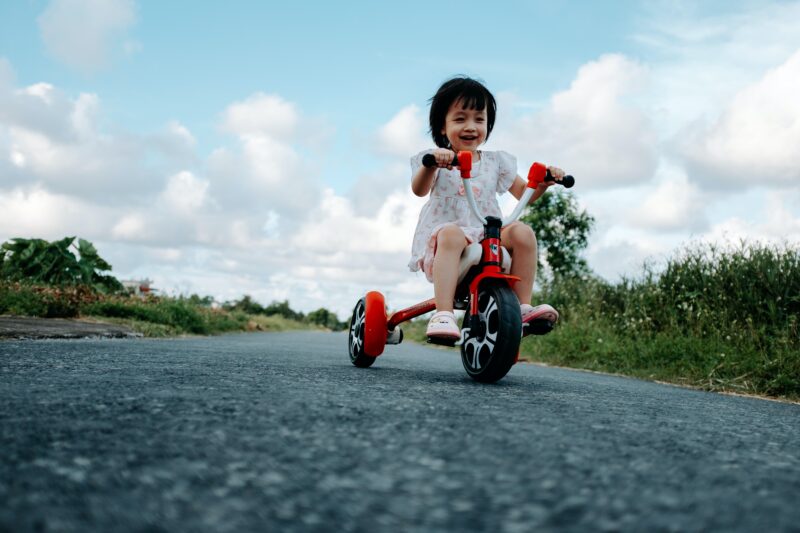
Preschoolers are adding more motion to their skill set, including bike riding, walking on tiptoes, and starting to somersault and throw.
Preschoolers will:
- Run and jump
- Climb on furniture and playground equipment
- Pedal a tricycle
- Walk on tiptoes
- Walk up and down stairs with alternating feet
- Start to skip
- Catch a ball
- Start to somersault
- Throw objects
Little Kid Gross Motor Skills (4–5years)
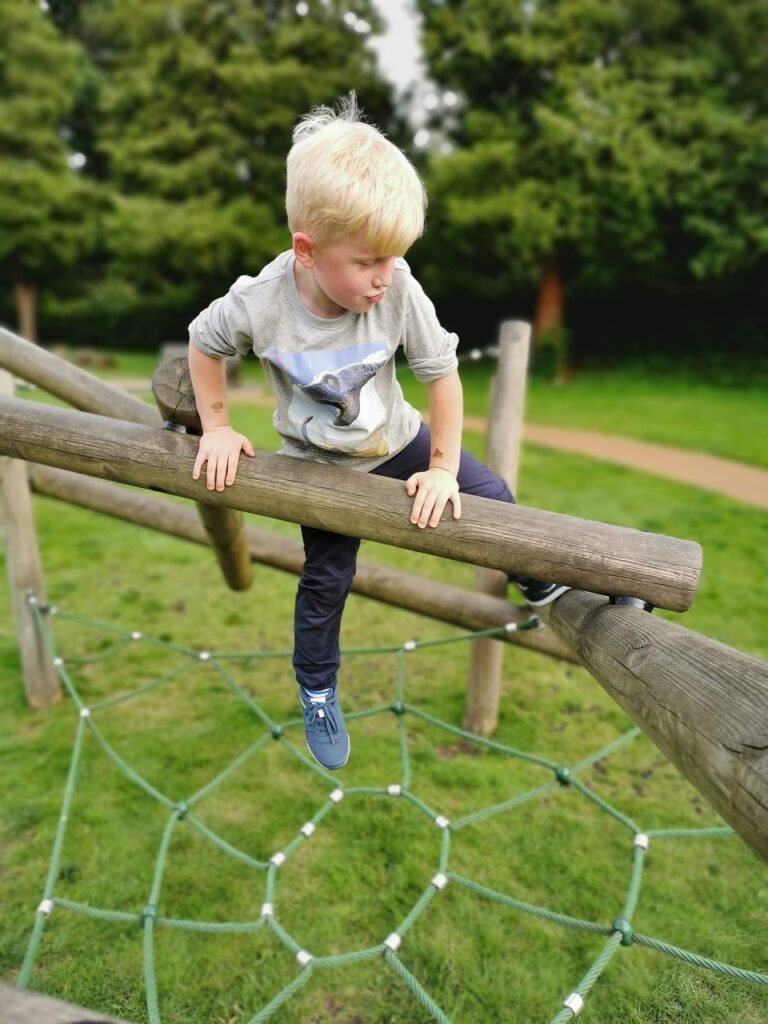
By the time they start school, kids will be playground-ready. They can skip, stand on one foot, jump rope, and climb.
By kindergarten, kids will:
- Skip
- Stand on one foot
- Move arms or legs together
- Jump rope
- Start to skate
- Ride a bicycle
- Climb a wall
- Catch a ball with their hands
- Run around obstacles
- Jump 10 times in a row
- Walk on tiptoes
- Walk along a line
- Hop on one foot
- Do a somersault
- Jump over something and land on both feet
- Walk backwards
- Hang on a bar for 10 seconds
- Stand on one foot for up to 5 seconds
- Throw a ball overarm
- Catch a ball that has bounced
- Walk upstairs while holding onto an object
Elementary Schooler Gross Motor Skills (6–7 years)
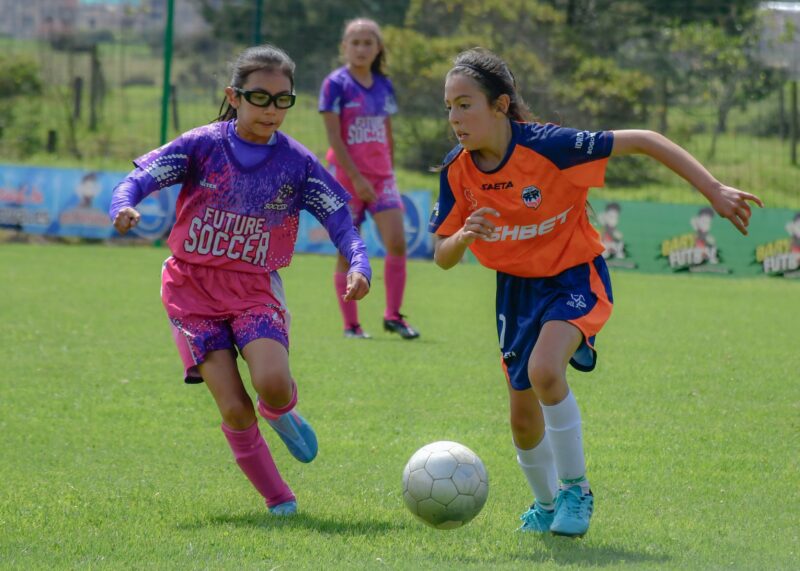
Kids in elementary school love to play active games that put their gross motor skills to the test, like tag, jumping rope, and soccer.
Elementary schoolers will:
- Run smoothly
- Step forward to throw a ball
- Kick a ball with accuracy
- Walk backwards
- Walk on a balance beam
- Move across monkey bars without support
- Skip rope
- Hop on one foot
- Jump forward with two feet together
- Catch a small ball with their hands
- Run lightly on their toes
- Have mature throwing and catching patterns
- Ride a bike
Resources
Centers for Disease Control Developmental Milestones List
Also, check out these fun activities that build gross motor skills.
For more articles like this one, be sure to subscribe to our newsletters.
